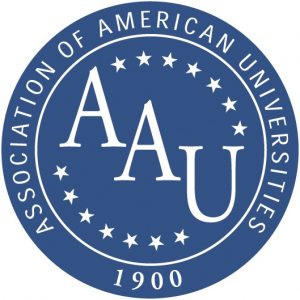A new grant-funded initiative at the University of Kansas will promote the use of data to improve teaching, student learning and retention in science, engineering, technology and math programs.
KU is one of 12 universities to receive a $20,000 grant from the Association of American Universities as part of a major AAU project to improve STEM education. The grant will be used to promote faculty-led course and curricular changes that enhance student learning among undergraduates, and to help eliminate long-standing achievement gaps for students from underserved groups.

The KU initiative will be led by an interdisciplinary team that includes Andrea Greenhoot, a professor of psychology and the director of the Center for Teaching Excellence; Caroline Bennett, an associate professor of engineering; Mark Mort, an associate professor of ecology and evolutionary biology; DeAngela Burns, vice provost for undergraduate studies; and Doug Ward, associate professor of journalism and associate director of the Center for Teaching Excellence.
“We see this as an important evolution in teaching and learning at KU,” said Greenhoot, who also leads a multi-university course-improvement program called TRESTLE, which is funded with a $2.5 million grant from the National Science Foundation. “Many KU faculty have been actively working to integrate evidence-based practices into their classes. Institutional data will help us gauge whether these efforts are helping students be more successful in later courses, and in completing their degrees.”
The new initiative will build on another project that CTE began last year. That project, part of a multi-university partnership known as the Bay View Alliance, is intended to help faculty members and departments use data to better understand student learning and student success, and to align with university goals of increasing retention and graduation rates.
Both initiatives aim to answer such questions as these:
- How well are entry-level courses preparing students for later courses in a program sequence?
- Are redesigns of such courses leading to better preparation and higher rates of success in later courses?
- Are there inequities in student achievement and success for students from underserved or other groups? How effective are our efforts to reduce such gaps?
The AAU initiative at KU will begin later this semester with a goal of including 10 STEM departments in discussions about how to use institutional data to inform course and curricular improvements that can foster better student learning and improved degree completion. Administrators and deans already have access to this type of data, Burns-Wallace said, but many universities are extending access to faculty as they work to improve student success.
“This is a great opportunity to incorporate faculty into a wider conversation,” Burns-Wallace said. “Student success is a shared responsibility, and this grant will help STEM faculty understand how their course and curricular transformations have an even broader impact on overall student progress at KU.”